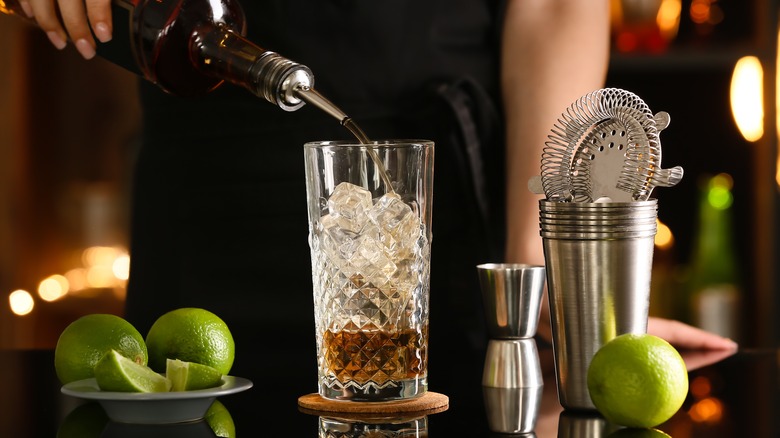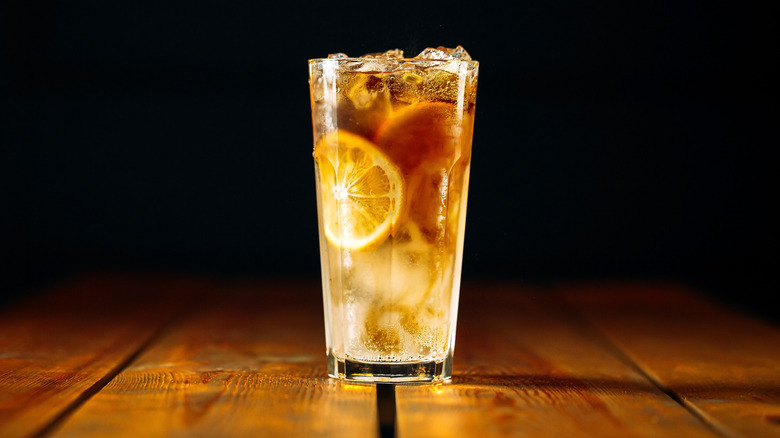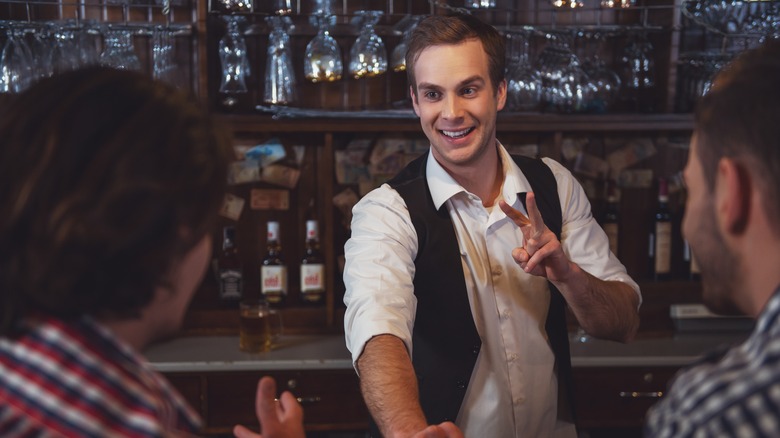The Assumption Bartenders Make When You Order Long Island Iced Tea
Despite its pleasing color and mix of both alcoholic and non-alcoholic ingredients, bartenders never assume that you're ordering a Long Island Iced Tea for its looks or flavor. Rather, this cocktail order is considered an instant red flag and an indicator that you're probably not interested in having a nice quiet night out.
Yes, bartenders do profile their customers, and with good reason. They can be held legally accountable for the actions of those they have overserved. Consequently, they're always on the lookout for people whose goal seems to be getting as drunk as possible for the least amount of money. The surest sign of this intent is ordering a cocktail like the Long Island Iced Tea, a libation famous for containing not one or two, but four potent liquors, and a liqueur to boot.
Bartenders know that traditionally, people have ordered this drink for one reason and one reason only: the high alcohol content. That's why, in fact, some bars and bartenders won't even serve the Long Island Iced Tea anymore. Bartenders aren't fooled by the splash of Coca-Cola that makes the cocktail look like iced tea. Instead, they're thinking about the rum, gin, vodka, tequila, and triple sec in the drink, and how these might affect your future behavior.
How the Long Island Iced Tea got such a bad reputation
Two stories have been put forth regarding the origin of the Long Island Iced Tea. One story dates the cocktail to the Prohibition Era, when it was created not on Long Island in New York, but on the one in Kingsport, Tennessee. Its initial recipe is said to have included the four liquors still used in the drink today, but also, rather bizarrely, maple syrup. When prepared, the drink looked more like a normal, alcohol-free beverage than the booze-filled bomb it actually was.
The other popular origin story does take place on Long Island, New York. According to this version, bartender Robert Butt of the Oak Beach Inn invented the Long Island Iced Tea for a cocktail contest in 1972.
The latter version is considered more likely, as it more closely dovetails with the rise in popularity of the cocktail, and also with its emerging reputation as a cheap drink ordered by college kids or those of a similar age. By the 1990s, the Long Island Iced Tea had become infamous as a cocktail that could get people drunk quickly. Because of this infamy, perhaps, it has always been considered a faux pas to order one in a fancy bar or restaurant.
Is it possible to order this cocktail without the bartender disapproving?
In recent years, a few bartenders have argued that the Long Island Iced Tea, based on its long history (or semi-long history, if you believe the 1970s origin story), deserves respect as a classic cocktail. However, classing up the drink was undoubtedly needed if it were ever to shed its low-brow reputation. Ordering an elevated version of the Long Island Iced Tea with more expensive liquors, rather than the typical well shots, should garner more respect from bartenders. However, if you order the drink in its classic incarnation — meaning with cheap liquors — bartenders will still likely make the traditional assumption: namely, that you're looking to get drunk on a budget. This is a drink, after all, with an alcohol by volume of 22%.
If you truly want to raise your estimation in the eyes of bartenders, it's probably best to avoid cocktails and shots that bartenders consider a red flag, like the Long Island Iced Tea or Five Star General that were created solely to inebriate people via their high alcohol content. Instead, you could always consider alternative options with similar ingredients: the mai tai and mojito both offer a hint of rum, lime, and sugary components, making for easy drinking.



